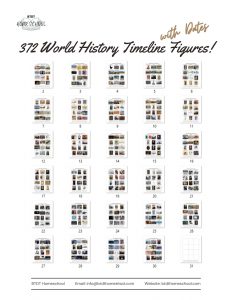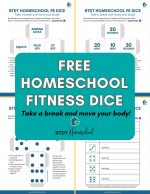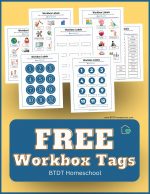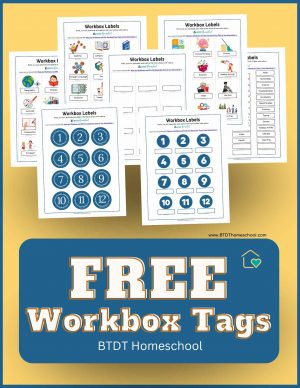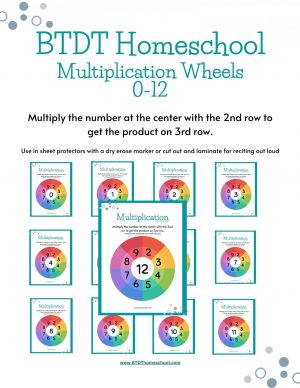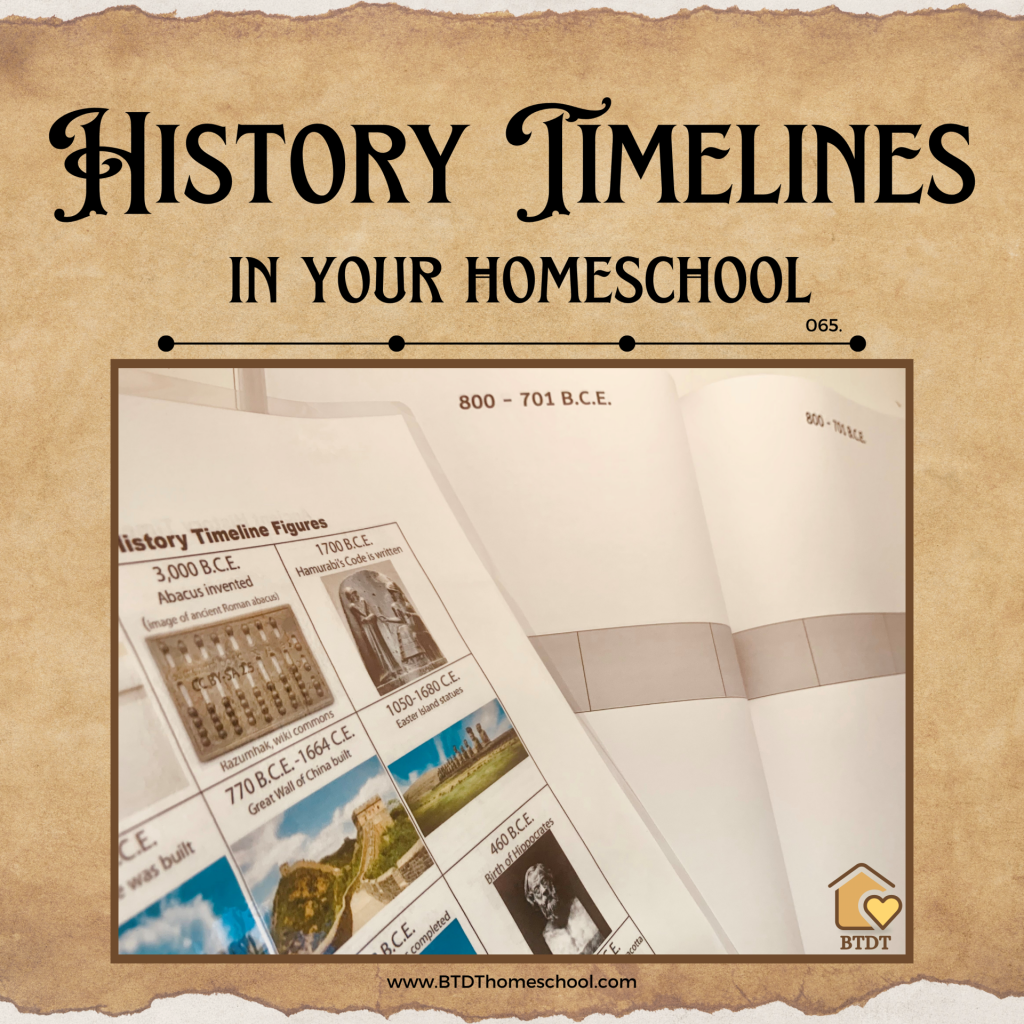064. Workboxes: What Are They and Why Should You Use Them?
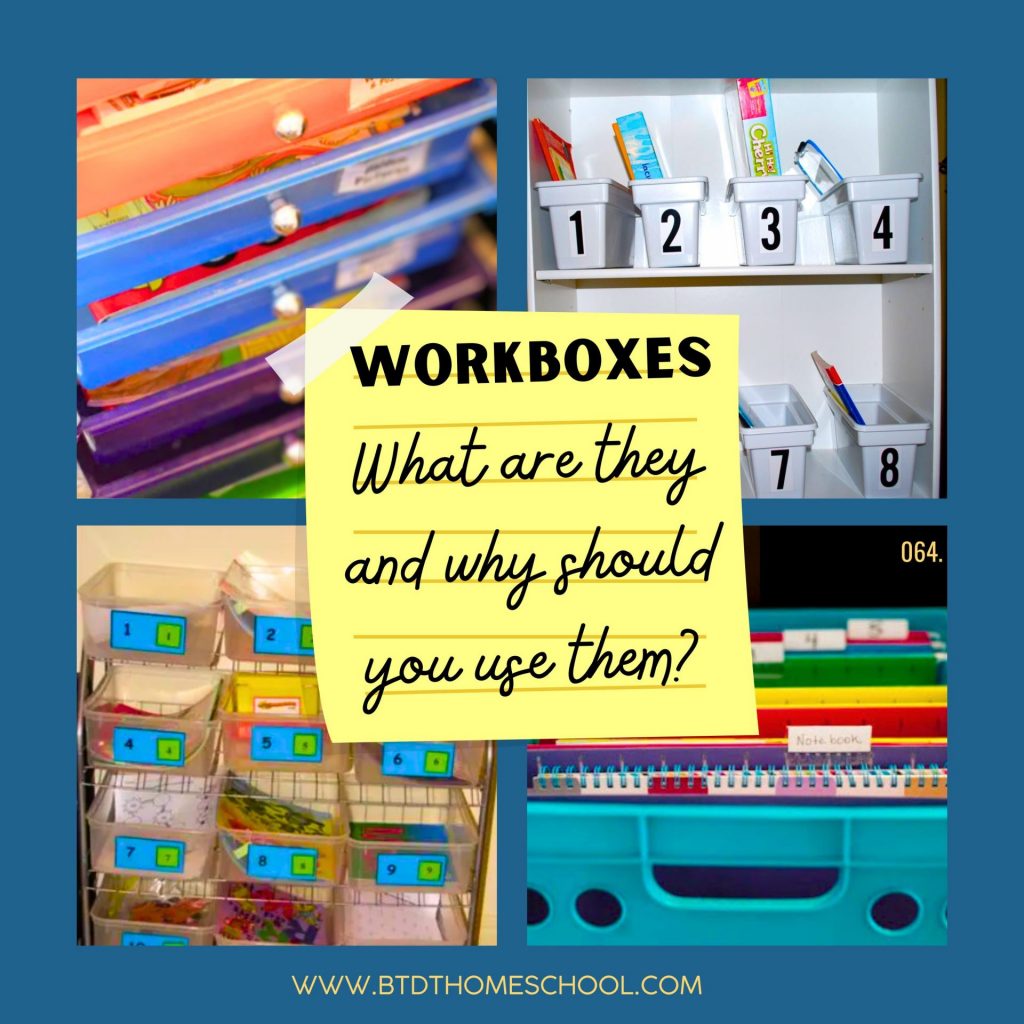
Imagine a system that takes the chaos out of homeschooling and replaces it with a sense of structure and excitement. Think about a tool that not only fosters independence and responsibility, but also teaches time management and self-discipline. And think of a learning method that encourages you to be more organized while being super quick and easy to maintain. This may sound too good to be true. But I assure you, this is a method that both of us have used and found to be gamechanging.
If you’re new to homeschooling or just looking for some fresh inspiration in your routine, this is the episode for you. Today, we’re talking about a tool that helped keep every day fun and made our children excited about school: Homeschool Workboxes!
Episode 064:
TWO WAYS TO LISTEN TO THIS EPISODE:
1. Click PLAY Button Above ^^ to listen here.
2. OR Listen on your favorite podcast platform:

Apple – Spotify – Google Play – Amazon – Others
Brand New to Homeschooling?
GETTING START PAGE >>
Kindergarten Page >>
High School Series >>
Scroll down for your FREEBIE
Workbox Tags/Labels!
Show Notes
We have done a couple different episodes on organization, like Episode 046. 12 Ways to Balance Your Home and Homeschool and Episode 009. Schedules, Routines & Rhythms. We provided tons of freebies like meal planners and family chore charts, and if you haven’t checked them out, you totally should! But today we are going to talk about a homeschool task management system that can really simplify your weeks and organize your day. And it’s actually really easy!
We get super excited about this topic because it really was a game changer for both of us. So, what exactly are homeschool workboxes? The workbox system was originally developed in the autism community and then tweaked by author Sue Patrick for use in homeschools with kids of all ages and abilities. She had a popular ebook that worked as a complete guide to the system. Many of us then altered the system further to fit our life and learning styles. This was all the rage probably about 10 years ago- and we still recommend this method because of how effective it is.

Homeschool workboxes are basically like little treasure chests filled with educational gems, designed to make learning engaging, organized, and fun for both parents and kids. Essentially, they are a method of organizing daily lessons and activities into individual containers or drawers. Each container is labeled with a specific subject or task for that day.
Think of these workboxes as your child’s personalized learning stations, where they can easily access everything they need for each lesson without you having to constantly rummage through piles of books and materials. The best part? Workboxes are incredibly flexible and you can tailor them to suit your child’s learning style, their interests, and their current developmental stage.
Homeschool workboxes aren’t just about organization; they’re also about fostering independence and responsibility in your child’s learning journey. By empowering them to take charge of their own workboxes, you’re teaching valuable life skills like time management, self-discipline, and problem-solving. Plus, it gives them a sense of accomplishment and pride that comes with completing tasks and moving onto the next box. It’s like unlocking a level in a video game, only with real-world knowledge and skills! You may want to consider using work boxes in your homeschool.
five reasons why
1. Organization and Structure
Homeschool workboxes provide a tangible framework for organizing daily lessons and activities. By assigning each subject or task to a specific box or container, you create a structured routine that helps your child stay focused and on track throughout the day. We were able to fill the boxes the night before or before the kids woke up before my brain was overwhelmed with the day so it kept me organized. It also gave me a structure to my day. I could easily look at our boxes and see where we were in the day and speed us up or slow us down. And because I also planned out my week on a spreadsheet, I could also quickly repack our bins for the next day in 5 minutes before bed every night.
2. Customization and Flexibility
Workboxes can be tailored to suit your child’s individual learning style, interests, and abilities. Whether you incorporate hands-on activities, multimedia resources, or traditional textbooks, you have the flexibility to design each box according to what works best for your child’s unique needs. Some people use their boxes solely to organize books and written material but there’s really no end to what you can add to it. You can put games, or flashcards, cds and movies, all kinds of stuff.
3. Promotion of Independence
One of the key benefits of workboxing is that it encourages independence and self-directed learning in your child. By giving them the responsibility to complete tasks and move onto the next box, you empower them to take ownership of their education. Who doesn’t like checking a box? Or in the case of workboxes, moving a velcro square to your done list. Whether I was nursing, changing the baby or dealing with other household things and my daughter asking me, “what do I do next?”.. I could say check your next workbox. And she would run across the house to the next task. She would beam with pride! And this really helped my kids to develop valuable life skills too such as time management and organization. Can I watch TV? I don’t know- What box are you on? One of my kids liked to do as many of his independent tasks as possible early in the morning before the rest of us were up.
4. Engagement and Motivation
Workboxing can inject a sense of excitement and motivation into your homeschooling routine. The visual and tactile nature of the boxes, along with the satisfaction of completing tasks and moving through the sequence, can help keep your child engaged and eager to learn. My kids were always so excited to see what was in the next box.
5. Adaptability to Multiple Ages and Subjects
Whether you’re homeschooling multiple children or teaching a variety of subjects, workboxing is a versatile approach that can be adapted to meet the needs of your entire family. You can easily customize the content and difficulty level of each box to accommodate different ages and learning levels, making it an ideal solution for homeschooling households with diverse needs. You can put anything in there- I had two boxes daily that were about tasks- hygiene and household. I also had boxes that directed the kids to work together, or to help a sibling with something.
There are various types of organizers you can use to create homeschool workboxes, depending on your preference, budget, and available space.
popular Workbox options:
Plastic Storage Drawers
These are perhaps the most commonly used organizers for workboxes. They come in various sizes and configurations, making it easy to customize them to fit your needs. Look for drawers with multiple compartments or adjustable dividers to accommodate different subjects and activities.
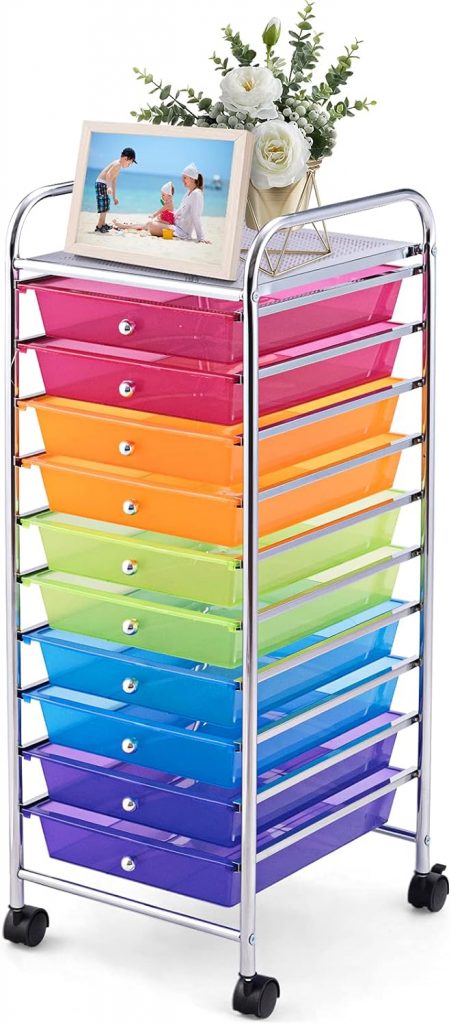
Clear Shoebox Containers
Clear plastic shoebox containers are an affordable and versatile option for creating workboxes. They’re transparent, allowing your child to see the contents easily, and they come in a uniform size, making them stackable and easy to store.
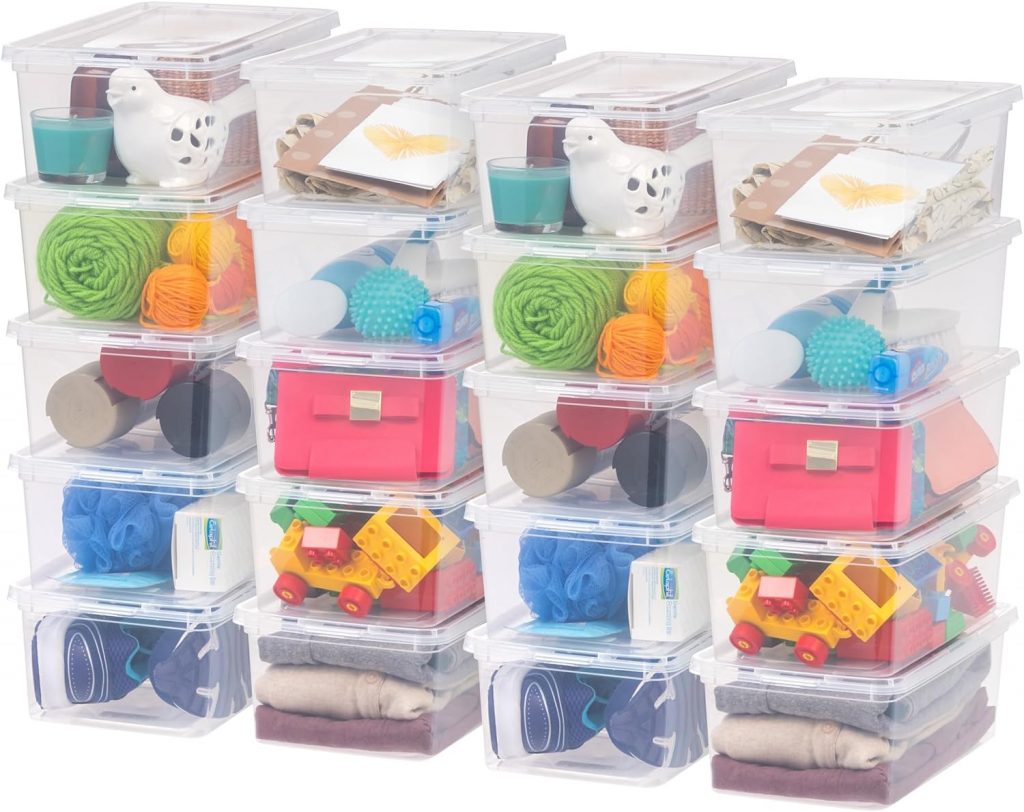
Desktop Organizers
If you prefer a more compact solution, desktop organizers with multiple compartments can be repurposed as workboxes. You can find organizers with shelves, cubbies, or trays that are perfect for storing books, supplies, and other materials for each subject.
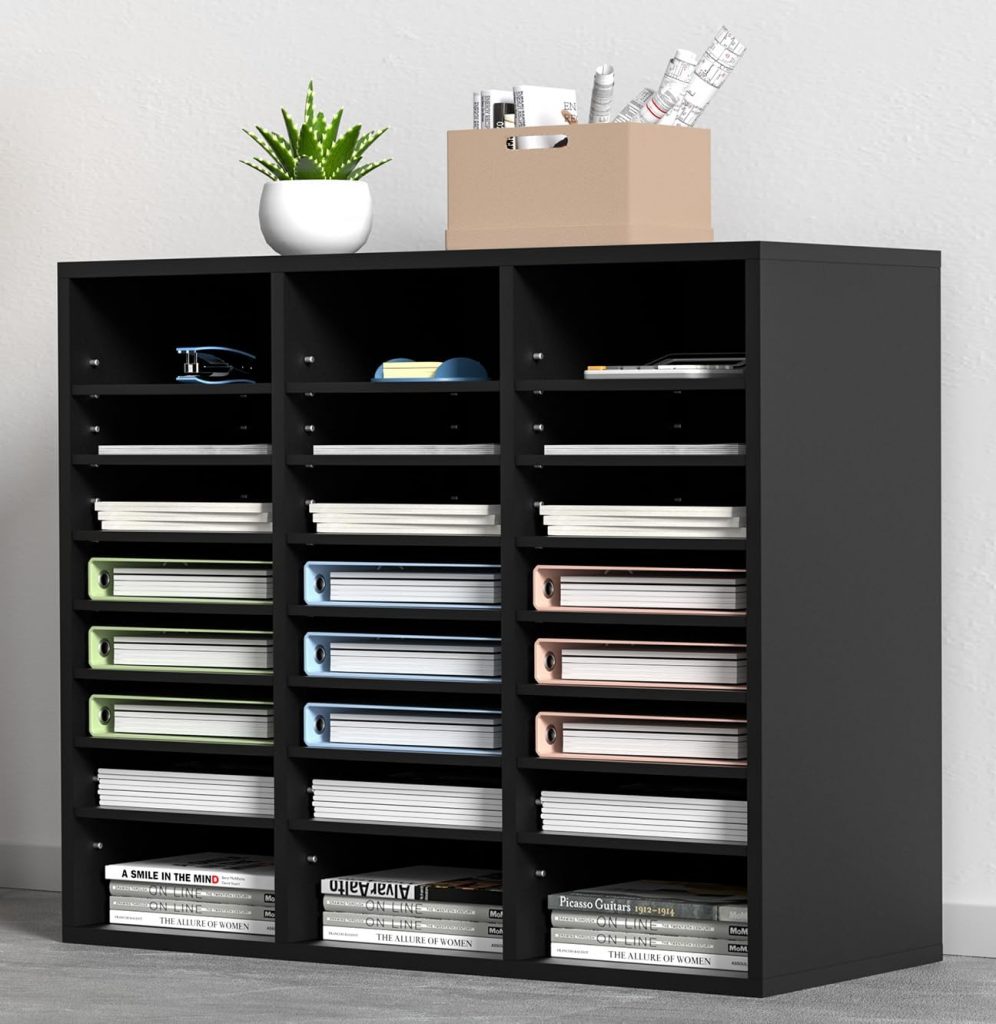
File Crates or Baskets
File crates or baskets with hanging file folders can be used to organize worksheets, assignments, and other paper-based materials for each subject. You can label the folders with the day of the week or subject name to keep everything organized and easily accessible.

Tackle Boxes
For a creative twist, consider using small tackle box to create portable workboxes.
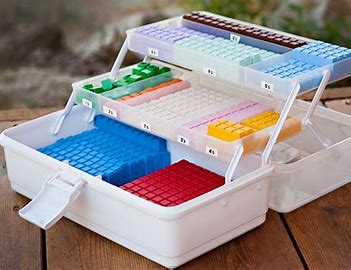
Math Manipulatives!
Toolboxes
These are especially handy for hands-on activities or STEM projects that require various tools and supplies and are very durable. You can use the top for additional deskspace and can sometimes find them second-hand at yard sales

Hanging Shoe Organizers
Hanging shoe organizers with pockets can be hung on the back of a door or on a wall to create a space-saving solution for workboxes. Each pocket can be designated for a different subject or activity, keeping everything neatly organized and within reach.
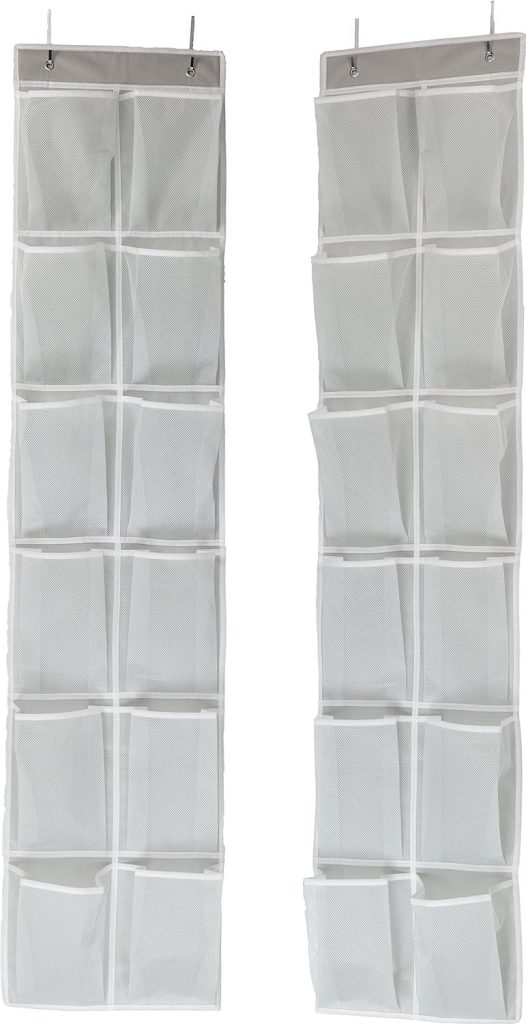
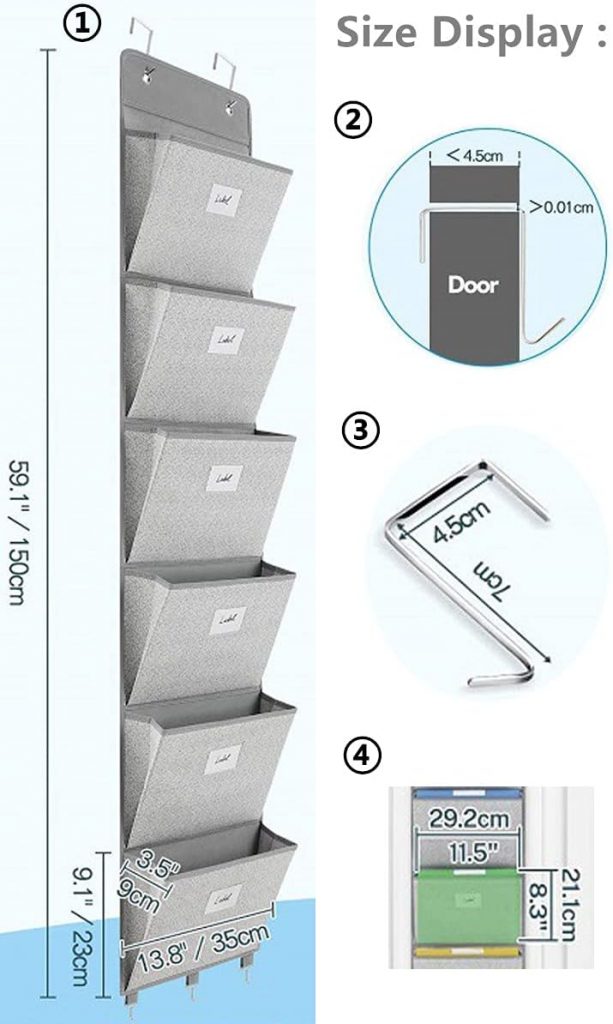
Ultimately, the best type of organizer for your homeschool workboxes will depend on your specific needs, preferences, and available space. Feel free to mix and match different types of organizers to create a customized solution that works best for your family. What then about labels and checkboxes?
Great news! I created some free workbox labels that you can download at the bottom of this page. You’re welcome to print and laminate them and Add a velcro tab. Just know that when you’re labeling your workboxes, consider the subjects or activities that are part of your curriculum and your child’s learning goals. For me, workboxing was also a great way to make time for some of the subjects that often got away from us during the week.
Common subjects for workboxes
Math
This box can include math textbooks, workbooks, math manipulatives, and any other materials related to math lessons or activities.
Language Arts
Include materials such as reading books, grammar workbooks, spelling lists, writing assignments, and language arts games or activities.
Science
Fill this box with science textbooks, experiment supplies, nature guides, worksheets, and any other resources for science lessons or projects.
History/Social Studies
Include history textbooks, maps, timelines, biographies, historical fiction books, and any other materials related to social studies or history topics.
Book of Centuries and Timeline Figures are a favorite in Workboxes!
Art & Music
This box can contain art supplies such as crayons, markers, paints, brushes, sketchbooks, and any other materials for creative expression or art lessons. Fill this box with musical instruments, sheet music, music theory books, and any other materials related to music lessons or exploration. So many ideas for art and music in our Episode 048. Music and Art in Your Homeschool
PE/Fitness
Include equipment for physical activities such as balls, jump ropes, yoga mats, and any other materials for physical education lessons or exercise breaks. I created some fitness dice that you can print on cardstock. These are so fun and our family gets pretty competitive with them.
Foreign Language
Include language textbooks, vocabulary flashcards, language learning apps or software, and any other resources for learning a foreign language. Sometimes we would just watch a Spanish cartoon and then I would just put an index card and write down “watch video”.
Technology/Computer Science
This box can contain laptops or tablets, coding books or resources, educational software, and any other materials related to technology or computer science lessons.
Electives or Special Interests
Reserve a box for Extracurricular Activities or activities that are tailored to your child’s interests or special talents, such as gardening, cooking, woodworking, or creative writing. This is where I would also stick my more task oriented boxes, too. We had a morning 5 list and an evening 5. And on my boxes, I made laminated labels that velcroed to the box on one side, and then on the other side I labeled the boxes by number. On top of our workboxes, each child had a wooden board that they would place those numbers on like a checklist. Check out our FREE Preschool-routine-charts
Remember, you can adjust and customize these labels based on your homeschooling curriculum, your child’s interests and abilities, and any specific goals or priorities you have for that school year. And they don’t have to be laminated, though you know mine are! I love my laminator! The goal is to create a system that works best for your family and helps facilitate a smooth and engaging homeschooling experience.
Whether you’re a seasoned homeschooling pro or just dipping your toes into the waters, we encourage you to check out homeschool workboxes together. Overall, workboxing offers a holistic approach to homeschooling that promotes organization, independence, engagement, and adaptability, making it a valuable tool for families seeking to create a dynamic and effective learning environment at home.
This Week’s Freebie:
-
 FREE Workbox Tags/Labels$0.00
FREE Workbox Tags/Labels$0.00
FREE Workbox Tags/Labels
Print these free printable workbox labels to help organize your homeschool space! We discuss this and share insights in Episode 064. Workboxes – What Are They and Why You Should Use Them?
FREE Multiplication Wheels
13 adorable rainbow multiplication wheels covering numbers 0-12. Use in sheet protectors with a dry erase marker or cut out and laminate and have your child recite one each day for math warm up. Make math fun! We talk about this in Episode 025. How Do You Successfully Teach Math? Are you tired of Math…



